Presentation
Recurrent abdominal pain and vomiting of 1 month duration
Patient Data
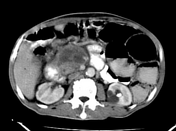



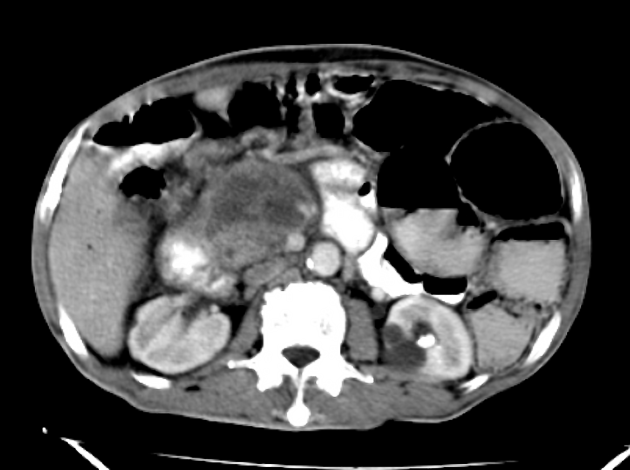
A large irregular pancreatic head mass with extensive necrosis is noted. It is inseparable from the mesenteric vessels, partial thrombosis of the portal vein, dilated pancreatic duct, invades the 2nd part of the duodenum and is associated with massive pneumobilia. There is also contrast filling of the CHD and right posterior hepatic duct suggesting choledoco-duodenal fistula formation. Multiple hypodense hepatic focal lesions as metastatic deposits.
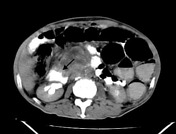
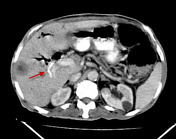
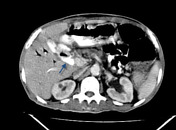
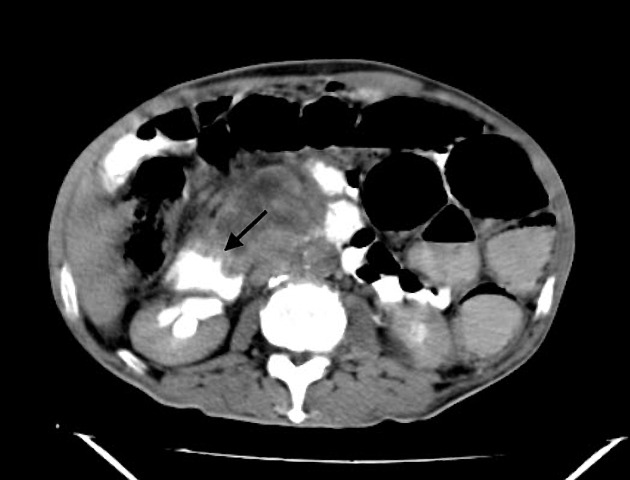
Black arrow refers to the invasion of the 2nd part of the duodenum by the pancreatic mass.
Red and blue arrows refer to the contrast filling the right posterior hepatic duct and CHD respectively.
Case Discussion
Pancreatic duct adenocarcinoma was found on biopsy. The tumor invades the 2nd part of the duodenum and CBD forming a choledocoduodenal fistula that results in massive pneumobilia and the presence of oral contrast within the dilated bile ducts. It was staged as T3N0M1.




 Unable to process the form. Check for errors and try again.
Unable to process the form. Check for errors and try again.